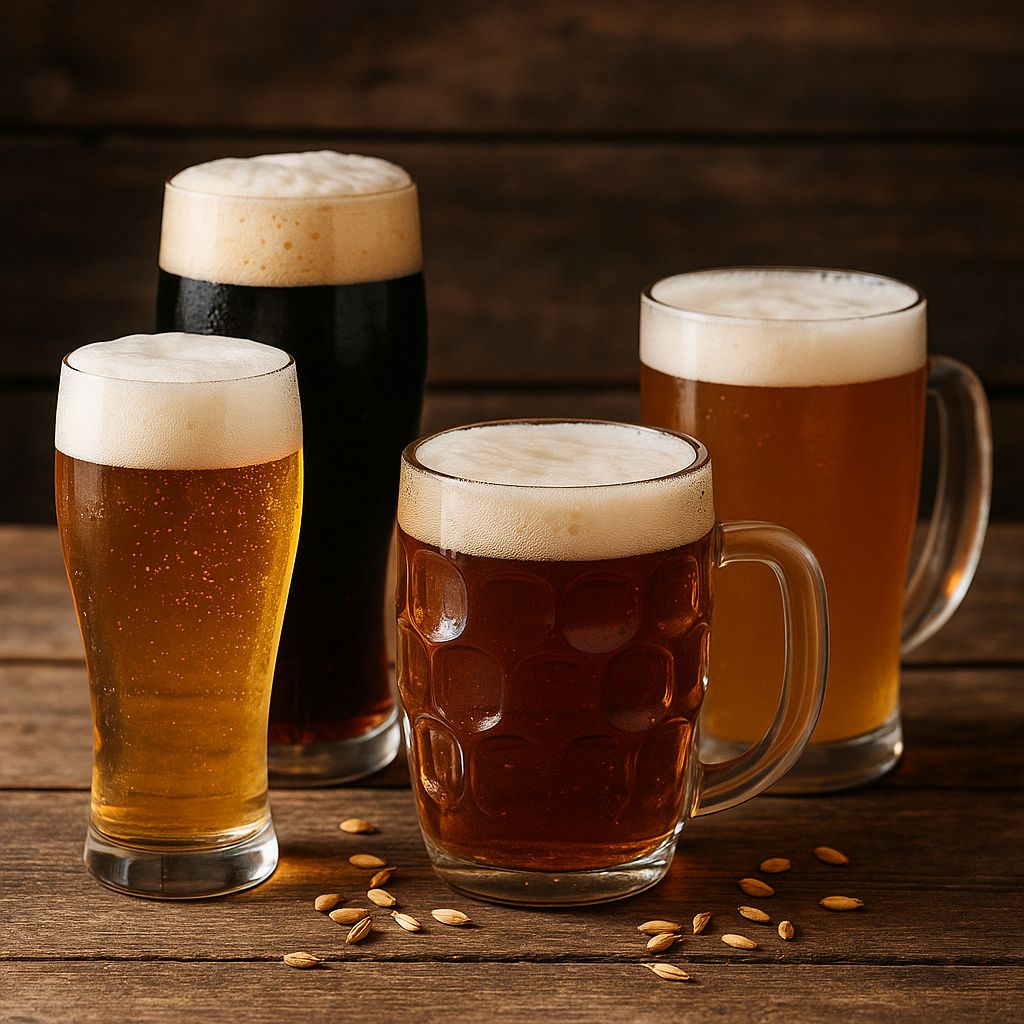Beer is one of the oldest and most beloved fermented drinks in the world. But if you’ve ever stood in front of a craft beer shelf, you’ve probably wondered: Why are some beers light and golden, while others are dark and taste like coffee or chocolate?
The answer lies in fermentation, ingredients—and the magic of malt!
The Basic Ingredients of Beer
Every beer is essentially made from four ingredients:
- Water
- Malt (usually malted barley)
- Hops
- Yeast
From this base, infinite combinations and styles can be created. But it’s mainly the malt and yeast that determine a beer’s color and flavor.
The Role of Malt: The “Toasting” That Changes Everything
Malt is barley that has been germinated and then dried or roasted. How much it’s roasted affects both the color and taste:
- Pale malts: lightly roasted. They produce golden beers with soft flavors like bread or honey.
- Medium malts: add amber tones and flavors like caramel, nut, or toffee.
- Dark malts: heavily roasted, almost like coffee. These create brown or black beers with intense flavors of cocoa, coffee, or even smoke.
It’s like toasting bread: the darker it gets, the richer the flavor.
Yeast: The Alchemist of Flavor
Yeast doesn’t just ferment sugar into alcohol—it also creates flavor compounds:
- Ale yeasts (top-fermenting, warmer temps) tend to produce fruity and spicy notes.
- Lager yeasts (bottom-fermenting, colder temps) give a cleaner, crisper taste with fewer esters.
And What About the Hops?
Hops are flowers added to provide bitterness, aroma, and preservation. They can be citrusy, floral, piney, or herbal—adding a lot to the beer’s character.
Classic Beer Styles and Their Profiles
Here are some examples to inspire your next tasting:
- Pilsner: golden, crisp, and refreshingly bitter.
- Pale Ale: amber, with caramel notes and fruity hops.
- IPA (India Pale Ale): hop-forward with citrus and tropical flavors, plus noticeable bitterness.
- Stout: dark, full-bodied, with notes of coffee, chocolate, and oats.
- Weissbier (wheat beer): hazy, smooth, with banana and clove aromas.
What Else Affects Flavor?
- Alcohol content: stronger beers often have more body and depth.
- Aging time: some beers mature like wine.
- Add-ins: fruits, spices, honey, lactose—creativity knows no bounds in brewing!
In a Nutshell…
Beer’s color and taste are no accident—they’re the result of careful choices about malt, yeast, temperature, and a dash of brewer creativity. So next time you see a dark or hazy beer, don’t shy away—it might be deliciously surprising!
So, what’s your favorite beer style? 🍻
